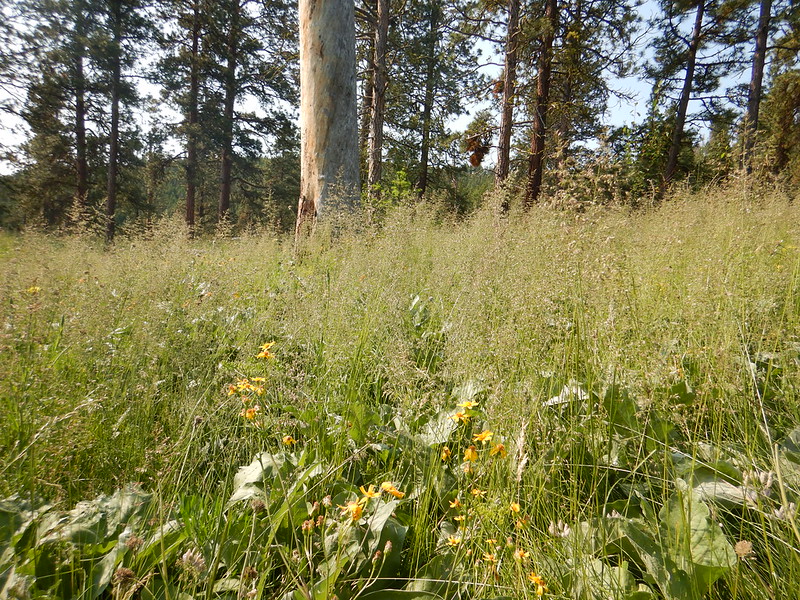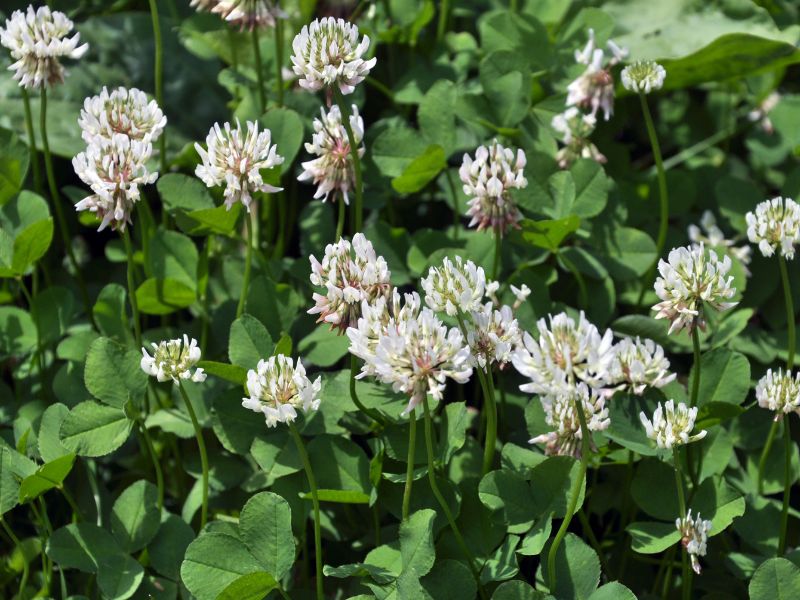Pollinator lawns are an alternative to regular lawns made with a mix of blooming flowers, shrubs, and low-maintenance grasses that are designed to attract bees, birds, butterflies and other pollinator species.
Besides helping the environment, pollinator lawns or bee lawns can also be aesthetically pleasing and enrich your yard with a beautiful and relaxing view.
What’s a Pollinator Yard?
A pollinator yard, also called a pollinator lawn or bee lawn, is a specific type of wildlife habitat designed to attract and offer nourishment to pollinators — bees, insects, butterflies, and birds.
A pollinator lawn is created by combining different types of native plants, low-growing perennials, trees and shrubs, and flowering grasses that will make your yard a safe haven for pollinators.
Why Should I Plant a Pollinator Lawn?
Pollinator lawns are environmentally friendly, low-maintenance. and are perfect for homeowners trying to create a beautiful landscape that will also benefit the local community. Here are some of the benefits of planting a pollinator lawn:
Pollinator lawns offer habitat and safe food sources for the pollinators in your local ecosystem. Bees and pollinators have been significantly affected by habitat loss and pesticide use, so by adding pollinator-friendly plants to your yard, you can help these hardworking insects find food and shelter. Pollinator yards are good for kids and pets. Pollinator gardens can combine different textures and scents, offering a sensory experience for you, your kids, and pets. Just make sure not to use plants that are poisonous to dogs or cats, and you’ll have nothing to worry about. Pollinator lawns will save you time and effort. Regular lawns require frequent mowing before the turf flowers, while pollinator lawns are made with low-maintenance grass types, and low-growing perennials or groundcovers that can be left to flower. Bee lawns will save you money. By creating a yard with low-maintenance or native plants, you won’t need to apply fertilizers or pesticides to maintain your yard, saving you time and expense.
Where to Plant a Pollinator Lawn
You can plant a pollinator lawn pretty much anywhere. If you’re not ready to commit your entire yard, start with a small area. Start with places like:
Your backyard or front yard* A sloped area that you don’t use often Around your house’s foundation In a vegetation strip between your home and the fence
What Turfgrasses Can You Use in a Pollinator Lawn?

The best cool-season grasses for pollinator lawns are a mix of fine fescues and Kentucky bluegrass. For warm-season lawns, your best choice is to opt for flowering native grasses. Be sure to leave the flowers on the grass instead of mowing when they bloom.
Another option is to plant a clover lawn or use other flowering groundcover plants. The advantage of planting a clover yard (or using other groundcovers) is that they are low-maintenance options that don’t require any mowing.
See Related: Does ‘No Mow May’ Support Pollinators?
What Plants Can You Use in a Pollinator Lawn?

Typically, pollinators tend to like sunny areas and, therefore, plants that thrive in the sun might be your best choice. You can also start your pollinator garden with native plants, which are perfectly adapted to your local climate.
Here are some bee flower suggestions for your wildflower lawn:
Self-heal (Prunella vulgaris) attracts the clouded yellow butterfly (Colias croceus) and is a host plant for the clouded sulphur butterfly (Colias philodice) and the gray marvel moth (Anterastria teratophora). It also attracts various bee and skippers species. Dutch white clover (Trifolium repens) attracts the endangered rusty patched bumble bee (Bombus affinis) and wasps. Dutch white clove also attracts hummingbirds to your yard. Creeping thyme (Thymus praecox ssp. arcticus; formerly Thymus serpyllum) is especially attractive to the tiny sweat bee (Auguchlora pura) and other bee species. It also attracts moths, hummingbirds and butterflies. Common violet (Viola sororia) attracts primarily butterflies, but it is also visited by native bee species and wasps. It is also the host plant for several species of fritillaries butterflies. Dandelion (Taraxacum officinale) attracts over 90 different bee species, around 62 hoverfly species, and at least 25 butterfly species. They also attract beetles and are a host plant for various moth species. Ground plum (Astragalus crassicarpus) is a favorite among bees, moths, and butterflies. Calico aster (Symphyotrichum lateriflorum) is a host plant for various moth caterpillars and also attracts flies, bees, and butterflies. Lanceleaf coreopsis (Coreopsis lanceolata) attracts songbirds, native bees, and butterflies. Prairie groundsel (Packera plattensis) is a favorite of skippers, carpenter and cuckoo bees, and is an important host plant for the caterpillars of the geometrid moth (Orthonama obstipata) and for the white-crossed seed bug (Neacoryphus bicrucis). Bee balm (Monarda didyma) is especially important for the beebalm shortface bee (Dufourea monardae), the beebalm fairy bee (Perdita gerhardi), and the bare miner bee (Protandrena abdominalis). It is also important for a variety of moth species, butterflies and hummingbirds.
Pollinator Lawn Growing Requirements

Before starting your pollinator lawn, be attentive to the growing requirements for a successful project:
Choose a spot with low traffic or no traffic at all. Heavy traffic creates compacted soil, which impairs plant growth. Choose a sunny to partially sunny area. Most flowering plants will tolerate some shade, but they prefer full sun, and won’t be able to flower properly in shaded areas. Avoid weedy areas. Weeds can outcompete your new plants and will give you a hard time when establishing your garden. Check your soil pH. Conduct a soil pH test so you can be sure about your soil conditions, and choose plants that are adapted to these conditions.
See Related: How to Build a Pollinator Garden
FAQ About Pollinator Lawns
Your pollinator lawn can look unkempt if you don’t regularly maintain the yard. You can prevent your pollinator garden from looking messy by keeping the edges trimmed or mowed so the plants won’t invade other spaces. Adding decorative elements, such as eco-friendly fences and birdbaths or nestboxes that attract birds to your yard, is another way to keep your lawn tidy.
Yes, you can certainly have a pollinator lawn even in a small yard. And if you have a large property, you don’t have to convert your entire yard into a bee garden. You can start with small sections, you just have to opt for plants adapted to your local climate.
Yes, a bee lawn can certainly save you money. Pollinator lawns require less maintenance when compared to a regular lawn, so you won’t have to spend money on grass fertilizers, pesticides, or herbicides. You’ll only need to water your pollinator garden regularly, and if you want a more polished, manicured look, you’ll have to prune and trim your plants from time to time.
When to Call a Pro
Are you tired just thinking about all the steps to build your pollinator lawn? You don’t have to do it all on your own. Contact our landscaping experts to help you come up with a beautiful pollinator lawn to make you (and the bees) happy.
See Related:
Main Photo Credit: Conall / Flickr / CC BY 2.0
Teresa Joaquim
Teresa is a plant enthusiast and creative writer who has been writing for LawnStarter for years, using her background in research to write about lawn care and all things green. A proud mom of two rescued cats, she also has a special love for animals.








